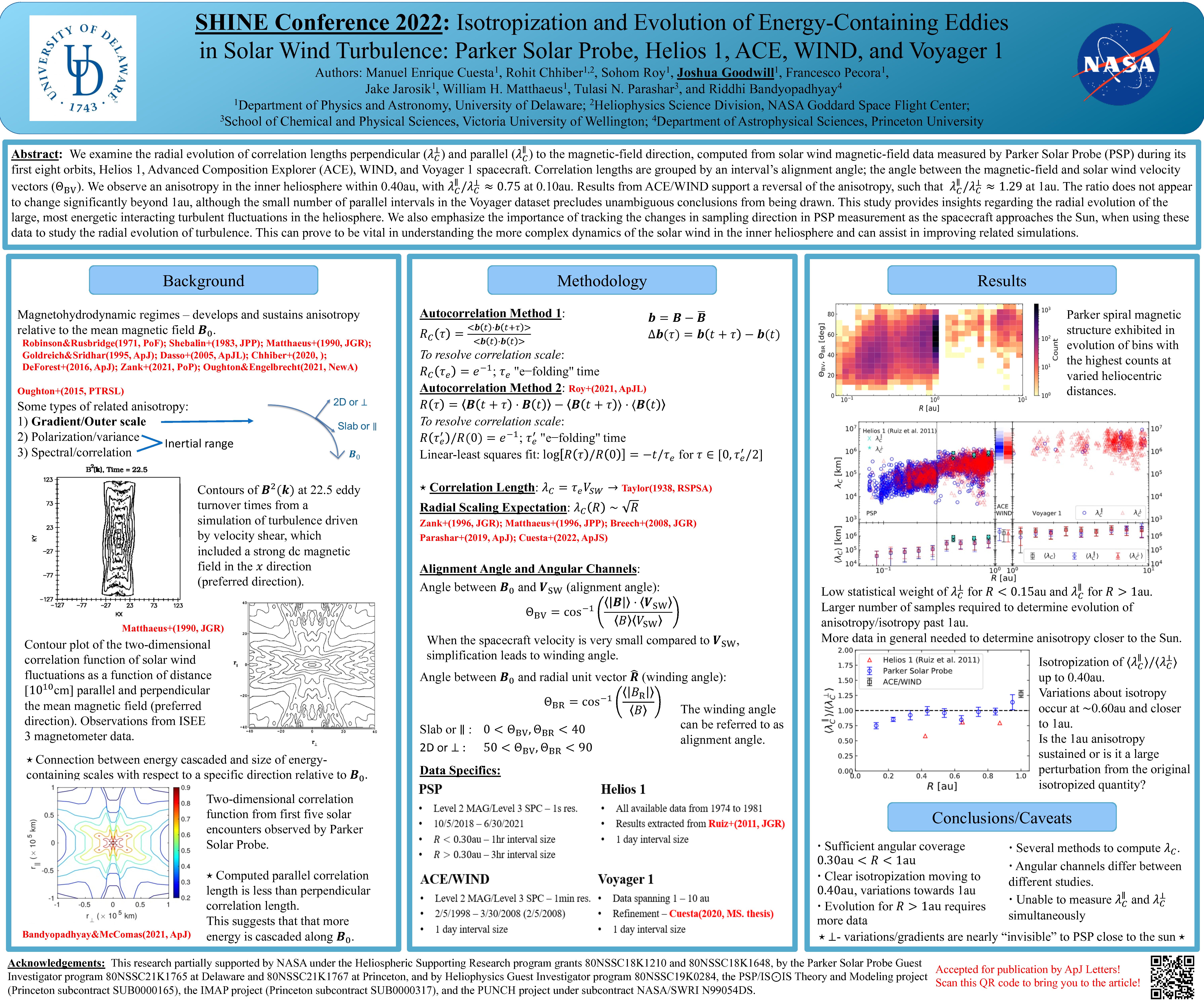Authors: Manuel Enrique Cuesta (University of Delaware), Rohit Chhiber (University of Delaware / NASA Goddard), Sohom Roy (University of Delaware), Joshua Goodwill (University of Delaware), Francesco Pecora (University of Delaware), Jake Jarosik (University of Delaware), William H. Matthaeus (University of Delaware), Tulasi N. Parashar (Victoria University of Wellington), Riddhi Bandyopadhyay (Princeton University)
We examine the radial evolution of correlation lengths perpendicular (λC⊥) and parallel (λC‖) to the magnetic-field direction, computed from solar wind magnetic-field data measured by Parker Solar Probe (PSP) during its first eight orbits, Helios 1, Advanced Composition Explorer (ACE), WIND, and Voyager 1 spacecraft. Correlation lengths are grouped by an interval’s alignment angle; the angle between the magnetic-field and solar wind velocity vectors (ΘBV). Parallel and perpendicular angular channels correspond to angles 0◦ < ΘBV < 40◦ and 50◦ < ΘBV < 90◦, respectively. We observe an anisotropy in the inner heliosphere within 0.40 au, with λC‖ / λC⊥ ≈ 0.75 at 0.10 au. This anisotropy reduces with increasing heliocentric distance and the correlation lengths roughly isotropize within 1 au. Results from ACE and WIND support a reversal of the anisotropy, such that λC‖ / λC⊥ ≈ 1.29 at 1 au. The ratio does not appear to change significantly beyond 1 au, although the small number of parallel intervals in the Voyager dataset precludes unambiguous conclusions from being drawn. This study provides insights regarding the radial evolution of the large, most energetic interacting turbulent fluctuations in the heliosphere. We also emphasize the importance of tracking the changes in sampling direction in PSP measurements as the spacecraft approaches the Sun, when using these data to study the radial evolution of turbulence. This can prove to be vital in understanding the more complex dynamics of the solar wind in the inner heliosphere and can assist in improving related simulations.


